THE





Jessica Saad | Manager

Caroline Chiaramonte | Manager
Kendra Ann Sherrill | EcoScreen Manager

Suzie Domnick | President of CMA
Design by Suzie Domnick
And special thanks to Sarah Provost and Suzie Hicks for all your insightful thought-leadership.
Betsy Broaddus | ManagerOur second report has been an illuminating journey for the entire team. We began wanting to shed a light on “eco-anxiety” in children, a very real and burgeoning reaction modern day children feel as they witness climate change around them and across the world. Yet as we spoke with the truly inspiring people working so diligently and passionately at the intersection of kids, families and climate, we knew we needed to shift our approach. The report focuses on the SOLUTIONS, the invaluable information that is available to all of us working in media; to create stories with green storylines, green productions that consciously reduce emissions … and resources so we can ALL do better. This powerful image of a teen holding a sign that said “There is No Planet B” profoundly resonated with us, and we hope it does with all of you too.

 Suzie Domnick CMA, President
Suzie Domnick CMA, President





WE ARE IN A


Sea levels are rising, the Arctic is melting, coral reefs are dying, oceans are acidifying, and forests are burning.


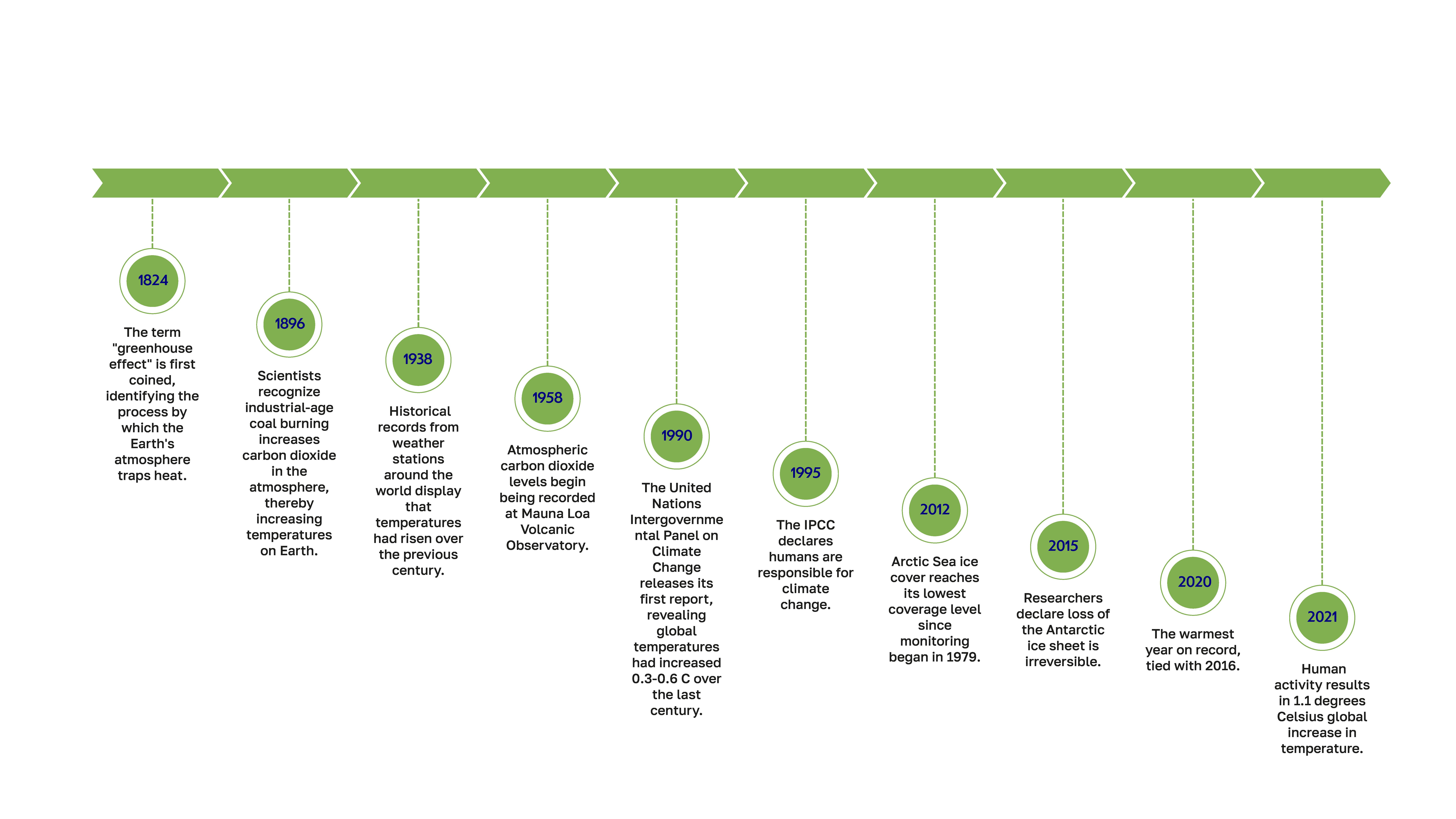

• Loss of arctic sea ice and global sea level rise
• Worsening wildfires, flooding, tropical storms and cyclones
• Extinction of fish, other wildlife, and coral reefs due to extreme ocean heat2
• Increase in spread and transmission of diseases like malaria and dengue
• Heat waves causing record illnesses and death
• Soil degradation threatening health and cognitive development3


While the ecological and socio political impacts of climate change are already being felt today, they will only worsen as temperatures rise.

This is an URGENT issue for the future of our CHILDREN.
Every additional degree of warming pushes humanity past critical tipping points.
• Humans have already heated the planet by 1.1 degrees Celsius.


• At 1.5 degrees warming, 1 billion people will experience more frequent, life-threatening heat waves, hundreds of millions will lack access to water due to severe droughts, plant and animal species will disappear, and coral reefs will suffer mass die-offs.
• Current policies being pursued by governments around the world put us on track for warming to 3 degrees by the end of the century. But, if nations begin to follow through on climate promises, then it might be possible to reach only 2 degrees warming.
Experiencing an extreme weather event which impacts physical health, mental health, and the development of a child.
Individuals feel distress by being aware of the climate crisis, even without experiencing direct or indirect impacts.

Economic downturns, migration, food and water shortages, and changes in physical infrastructure impact physical health and development and cause stress, grief, anxiety, and depression.


Children are at a greater risk from climate change as they are physically more vulnerable than adults.
• Over one-third of children are currently exposed to heatwaves, water scarcity, and lead pollution caused by contaminated air, water, soil, and food.
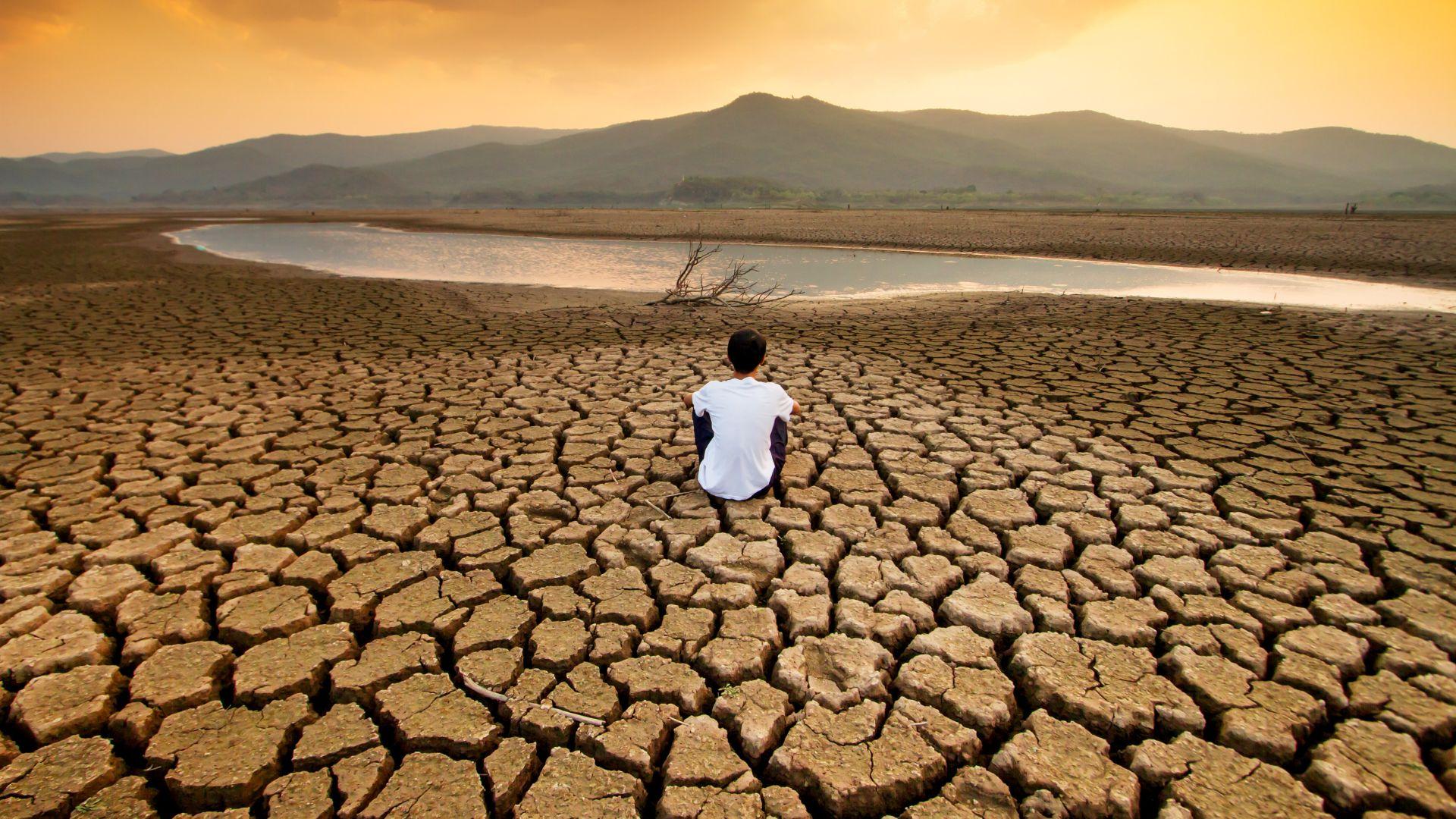
• Almost 90% of children are currently exposed to high levels of air pollution.
• 1 in 4 children are highly exposed to vector-borne diseases, such as malaria and dengue.



• Nearly 1 in 6 children are highly exposed to cyclones.
• 1 in 7 children are highly exposed to river-line flooding.
• 1 in 10 children are highly exposed to coastal flooding.


Climate change negatively impacts children's mental health at every stage of development.
PRENATAL: Extreme heat causes birth complications and can be detrimental to neurological development of the baby. Stress caused by environmental disasters while pregnant increases risk for the baby to develop anxiety, mood, behavioral, psychotic, and autism spectrum disorders.




EARLY CHILDHOOD: Young children are especially vulnerable to environmental factors that impact physical and cognitive development. Malnutrition, dehydration, insect-borne diseases, and environmental toxins can impact developmental milestones, increasing vulnerability to mental health challenges.

MIDDLE CHILDHOOD: As a child thinks and feels with increasing independence, exposure to environmental disasters can lead to attachment problems, disrupted sleep, PTSD, depression, and anxiety. Environmental disasters can also disrupt school, extracurriculars, and social support networks, leading to delays in developmental milestones.




ADOLESCENCE: As a child becomes a teenager, heat waves impact sleep quality, learning, cognitive performance, and high school graduation rates. Adolescents are also increasingly aware of and express concern over climate change.






When children learn about climate change but are not provided with the tools to cope or opportunities to engage with solutions, they experience hopelessness, eco-phobia, and denial.7
• Younger children often feel distress about climate change as it impacts animals or the natural, non-human world. While they may not understand the impacts that directly affect themselves and their loved ones, they feel empathy for the natural world around them.8

Older children and adolescents tend to be more pessimistic when it comes to climate change.9

▪ A survey of kids ages 6 to 12 in 13 countries finds 91% are concerned about climate change.10
▪ A majority of young people (ages 16 to 25) say the future is frightening and humanity is doomed. Almost 4 in 10 are hesitant to have children because of the uncertainty caused by climate change.11
▪ A majority believe the government response is failing young people and is lying about the impact of the actions taken.11

Climate anxiety is not only caused by experiencing or witnessing environmental disasters, but also by powerful figures failing to act on the threats.9


• Minimizing: Some children cope in ways that detach themselves from the problem, thereby disengaging from environmental issues.

• De-emphasizing the severity of climate change, downplaying its urgency, avoiding climate change information, or distracting themselves.
• Problem-solving: Other children search for information and think about what they as an individual can do to alleviate the problem. While this leads to feelings of empowerment, focusing on small things one can do in everyday life places a large burden on the individual child.

• Finding meaning: Some teens engage in meaningfocused coping in which they acknowledge the severity of the issue as well as the reasons to be hopeful and act to make a positive difference.
• Many young people believe teachers and parents do not take their anxiety around climate change and environmental issues seriously.

• It is important to acknowledge and validate our children’s worries to empower them to do something constructive with their emotions.

Educators, families, government entities, and the media need to be involved.
• According to a study done by Yale University in 2022, engaging in collective action can mitigate the effects of climate change anxiety.




“Right now the vast majority of shows and films are set in an alternate universe that doesn’t include the climate crisis … audiences are starting to feel that disconnect.”


-Anna Jane Joyner, founder and director of Good Energy

• Climate change is underrepresented in media. A study of over 37,000 scripts identified less than 3% included any climate change keywords and less than 1% actually included the phrase "climate change." Only 10% of the stories depicting extreme weather events tied the occurrence to climate change and just 12% related it to the use of fossil fuels.13

• Only a third of parents report seeing climate change themes in children’s media.14
• Yet, nearly half of audience members want to see more fictional shows with themes related to the climate crisis.13
• Nearly 70% of parents believe children’s media should include ageappropriate information about climate. 74% agreed that children’s media should include climate solutions.14
• Integrate climate change into storylines to accurately depict the state of the world.
• Link clean energy to character roles and identities, dramatic situations, and plot development alongside props, background visuals, and scene transitions.

• Consider word choice and the use of imagery.
• Depict clean energy as the new norm through role models in television and film.15


For more insights on incorporating climate conscious storytelling into your work, check out the Lights! Camera! Clean Energy!: A Guide to Integrating Clean Energy Norms Into Popular TV and Film, NRDC’s Rewrite the Future initiative, and the Good Energy Playbook for Screenwriting in the Age of Climate Change that will help you bring your climate stories to life.




Each episode follows the Octonauts helping species in need of rescue under the sea and on land. The show communicates to young minds that the world is changing without being frightening.


Obki the alien wants to have a positive impact on Earth. Each episode explores the impact of climate change and small changes anyone can do to be kinder to the planet.


Six children from six continents unite to form the MeteoHeroes! All born on Earth Day and celebrating their 10th birthdays, each finds a special meteorite stone and their magical powers to help save planet Earth are born. The children join with scientist Margherita Rita at the Meteo Expert Center and begin their adventures.

Television series

Follows four explorers as they trek across different ecosystems identifying and preventing environmental problems.




Claw-size matters to a fiddler crab, so when a plastic bottle cap stands in for Shelton's worthless digging claw, he feels almost God-like, but this kind of glory will come at a horrible cost.

Documentary series | Netflix


Nature documentary series showcasing several species living in high risk areas due to climate change. Emphasizes the existential impact of the climate crisis on animals and their homes. Part of a larger impact initiative from WWF and Silverback. Read more in the Our Planet Impact Report.



Documentary series | BBC iPLayer

In a special documentary commissioned by the RSPB, WWF, and the National Trust, we hear the real stories of passionate people who are trying to restore biodiversity to the British Isles.


(2023-)



Children who become Earth Rangers are empowered to become leaders at home and in their communities by organizing shoreline cleanups, creating backyard animal habitats, and reducing food waste and energy consumption at home.




“Putting players into that place where they can make choices, and see the impact of those choices, changes everything.”

Daybreak is a cooperative boardgame about stopping climate change. It is an unapologetically hopeful vision of the near future, where you and your friends get to build the mind-blowing technologies and resilient societies we need to save the planet.
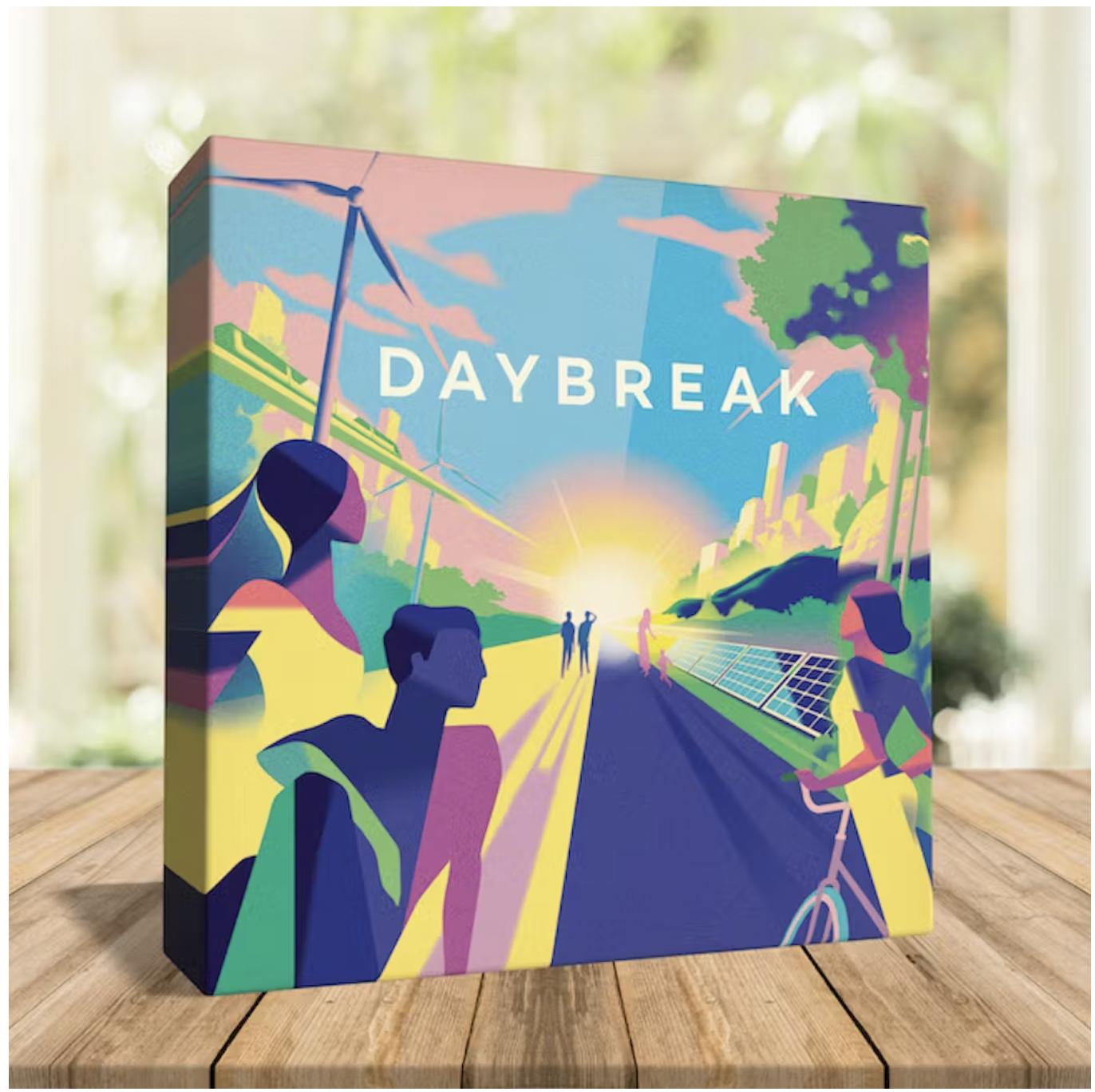

- Joan Moriarity
Co-author, What Board
Games Teach Us About Life

We must create climate conscious work, AND be climate conscious in practice.
• The global entertainment industry produces millions of metric tons of CO2 per year.37
• The DGA Sustainable Future Committee’s mission provides recommendations to reducing carbon emissions and waste in film and television production to mitigate the adverse impacts on the environment.16
• Media companies like Sky Zero pledged net zero carbon emissions by 2030, outlining a strategic vision for how to accomplish this goal as a media organization.17

• Green Production Guide: Developed by film industry leaders with environmental expertise, the Green Production Guide offers the tools, resources, and vendors you need to reduce the environmental impact of your production.

• Implement sustainable best practices for production:
• Track carbon footprint, plywood usage, and give back to your local community.18

Greener Productions Handbook:
We Are Albert offers tools including the carbon calculator and Carbon Action Plan to measure and reduce carbon footprint
• Ensure the team is aware of environmental goals and cost implications, hire a green crew, participate in training, and understand implications of what is shown on the screen.19


For More Details on Green Production from PGA: PGA Call To Action
Emissions reduction priorities:

• Eliminate the use of diesel generators
• Install EV charging stations
• Maintain energy efficient and low carbon buildings
• Use renewable energy
• Update equipment rental inventory
• Support green initiatives








“Combating climate change requires collective action, and by spreading awareness through education, we prepare future generations to act in the best interest of our planet.”
-Assemblyman James Kennedy of New Jersey, Environment and Solid Waste Committee Chair
• It is crucial for kids 0-8 to develop environmental literacy. Incorporating curriculum into more than one school term with targeted programs and activities may help with conceptual challenges.

• Early education allows people to make informed decisions regarding the environment (like energy consumption).20, 21
• Connecting early learners to nature through curriculum and experience provides a powerful foundation for science inquiry.22
• Building or renovating early education facilities to be more resilient to climate change is crucial to mitigating future harm.23

• Nature-rich school experiences.21
• In-class experiments & visual aids can help kids better understand global warming.

• Action components can give students a sense of empowerment and reduce feelings of paralysis.
• Requires a supportive school community, a suitable project and sufficient time for students to see the results of their work.20




• Introduce the causes of climate change and the ecological and societal ramifications.
• Differentiate between general environmental issues and climate change.
• Identify cross-sector solutions and the need for community building and intersectional engagement.


This Is Planet Ed is an initiative of the Energy and Environment Program at the Aspen Institute. They seek to use the power of education to drive climate action, climate solutions, and environmental justice among the next generation.
The K12 Climate Action Plan identifies the opportunity for the education sector to take action, advance climate solutions, and prepare today’s students to lead a sustainable future.
K12 Climate Action Plans should address mitigation, adaptation and resilience, education, and equity. This Is Planet Ed has resources to help determine opportunities in your school district with these key questions.


Opportunities for schools to transition to more sustainable operations including energy, transportation, and food use.


Opportunities for schools to adapt and build resilience in preparation for disruptions and negative impacts related to climate change.




Opportunities for teaching and learning in formal and informal settings can empower children and youth with the knowledge and skills to build a more sustainable world.
For more detailed education plans: K12 Education Plans


Ensure diverse voices are elevated and guide our focus on the needs of underresourced urban and rural communities and historically underrepresented students and families.




• The UNICEF Children’s Climate Summit:
• 300 children representing all constituencies in Bangladesh to debate climate issues, policies, and actions plans.
◦ Culminated in the adoption of a Children’s Climate Declaration.
▪ Children call for decision-makers to reduce pollution and greenhouse gas emissions, invest in education, training and a green economy, and protect children against the impacts of climate change.28
• Children are filing lawsuits against governments to protect their right to a livable future with the support of Our Children’s Trust.29


• Schools for Climate Action: youth-led coalition introducing two house resolutions to address both the need for K-12 climate literacy education and the need for climate-related mental health resources and support for youth.30
• Clean energy resolutions have been driven by students coming to the school boards and saying, "School boards, we have to do this work. We have to take action on that.”31

• Friends, Groups, Community: Talk to friends, join after-school programs, sustainability clubs, community initiatives, and meet others like you.

• Action: Adopt goals to reduce emissions, use clean energy district-wide, plant more trees, and encourage schools to compost.
• Get out in nature and become more aware of the world around you.




The United Nations approved a landmark agreement to create the world’s first global plastic pollution treaty, describing it as the most significant environmental deal since the 2015 Paris climate accord.
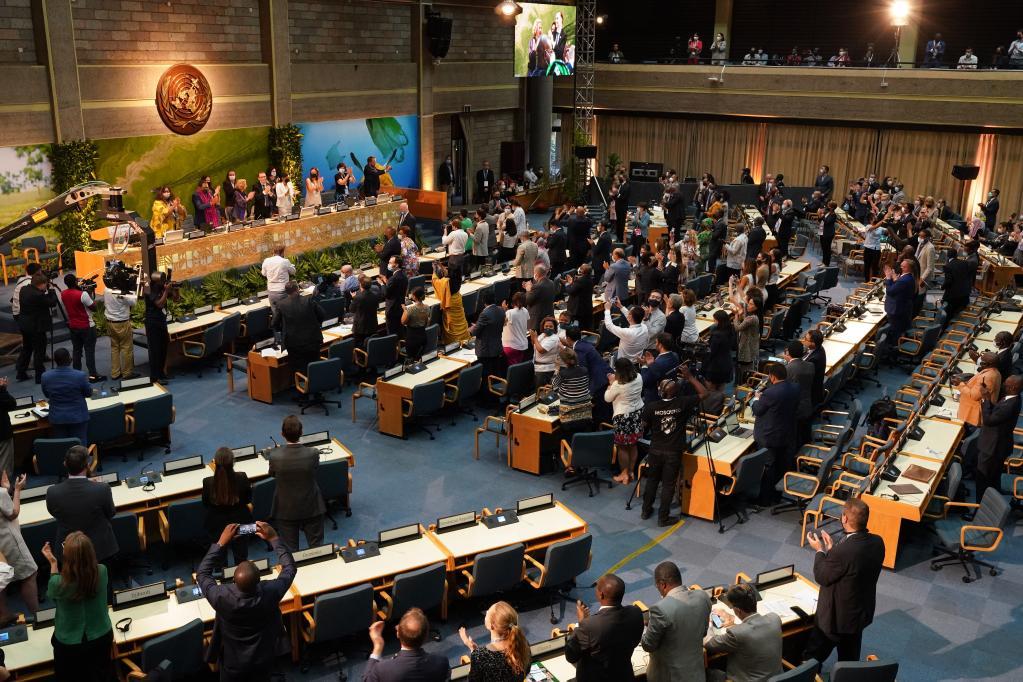
The Inflation Reduction Act: $369 billion in climate and energy provisions which provides funding to support schools in creating healthy and sustainable learning environments.

• Has the potential to reduce carbon emissions by 40% by 2030, promote environmental justice objectives in communities that are the most impacted by climate change, and create high-paying clean energy jobs.34

• In September 2022, New Jersey became the first state in the U.S. to integrate climate change education across its curriculum standards. 25

• Child Care Infrastructure Grant Program in California: Prioritizes project proposals from child care providers that use climate-resilient materials and retrofit their facilities for disaster mitigation.36
• ClimeTime: facilitated by the Office of the Superintendent of Public Instruction (OSPI) in Washington State. In the 2019-2020 school year, they set a goal to build capacity of science teachers in all regions to help youth understand climate science and promote a thriving and sustainable environment.35
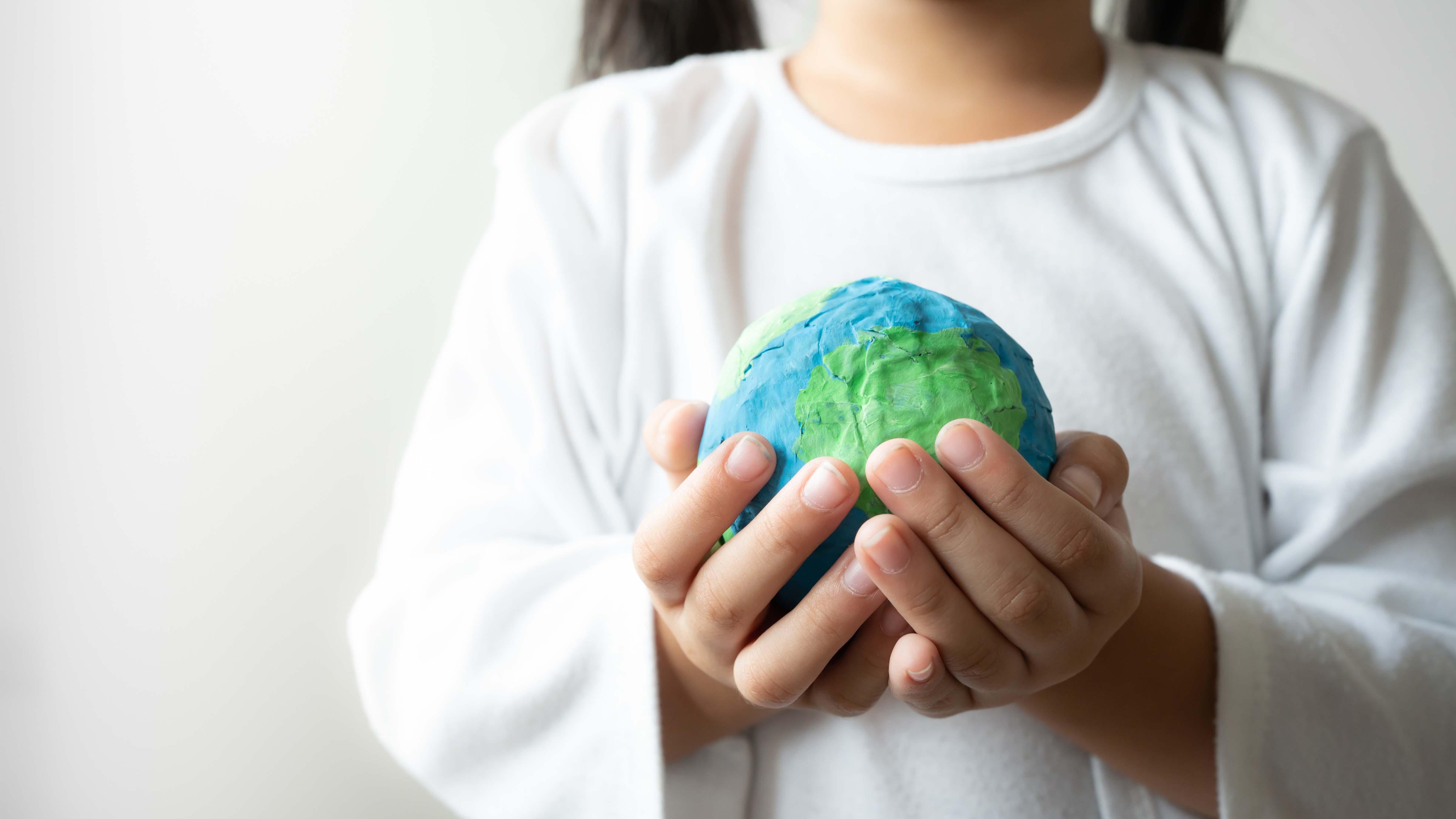



An organization dedicated to addressing the mental health impacts of the climate crisis through education, community engagement and by harnessing the power of media and technology. They are passionate about the power of storytelling to de-stigmatize climate mental health issues, and are working with leaders in the entertainment industry to tell stories about climate mental health and offer climate emotional resilience resources. Climate Mental Health Network are an Impact partner for the Apple TV+ show, EXTRAPOLATIONS. Find out more about this organization - Climate Mental Health Network

Project Drawdown’s mission is to help the world reach “drawdown”—the point in the future when levels of greenhouse gases in the atmosphere stop climbing and start to steadily decline, thereby halting catastrophic climate change—as quickly, safely, and equitably as possible.
Offering science-based climate solutions across sectors that highlights three connected areas that call for action, comprising the Drawdown Framework for climate solutions:
• Reduce sources: bring emissions to zero
• Support sinks: uplifting nature’s carbon cycle

• Improve society: fostering equality for all

Learn more about Project Drawdown


WWF is an independent conservation organization active in nearly 100 countries, who are working to sustain the natural world for the benefit of people and wildlife. Their mission is to stop the degradation of the earth’s natural environment and to build a future in which humans live in harmony with nature by: conserving the world’s biological diversity, ensuring that the use of renewable natural resources is sustainable, and promoting the reduction of pollution and wasteful consumption.
WWF + SAVE THE CHILDREN: A joint initiative between World Wildlife Fund and Save the Children International that establishes education programs and youth initiatives to reduce the impact of climate change and drive change.
• Provides knowledge and skills needed to become agents of change and invest in children’s confidence to shape their communities’ futures.

Learn more about WWF

• Early Childhood Environmental Education Rating Scale: A collaborative tool for educators to discuss early childhood environmental education program goals, consider strengths and areas improvement, and chart a future direction for program development.
• Subject to Climate is a free online resource hub of K-12 lessons that cover interdisciplinary academic topics through a climate lens. Their mission is to make climate change teaching and learning accessible to all.
• Through the National Project for Excellence in Environmental Education, the North American Association for Environmental Education (NAAEE) is establishing guidelines for the development of environmental education materials and programs.

• The program includes formal and non-formal education, curriculum development, instructional design, early childhood education, and adult education.


• NASA Guide to Climate Change for Kids: Includes short videos, posters, and short guides for explaining climate change to kids.
• My Garden of a Thousand Bees: Follow acclaimed wildlife filmmaker Martin Dohrn who turns his lenses on the surprising and spectacular bees living in his own urban garden in Bristol, England.


• Climate Cardinals: An international youth-led nonprofit, with the mission to “make the climate movement more accessible to those who don’t speak English.”
• Fridays for Future: Youth-led and organized global climate strike movement to put pressure on policymakers.
• Sustainable & Just Future: Youth-led nonprofit making environmental education accessible.

• Climate Reality Project: Their mission is to catalyze a global solution to the climate crisis by making urgent action a necessity across every sector of society.

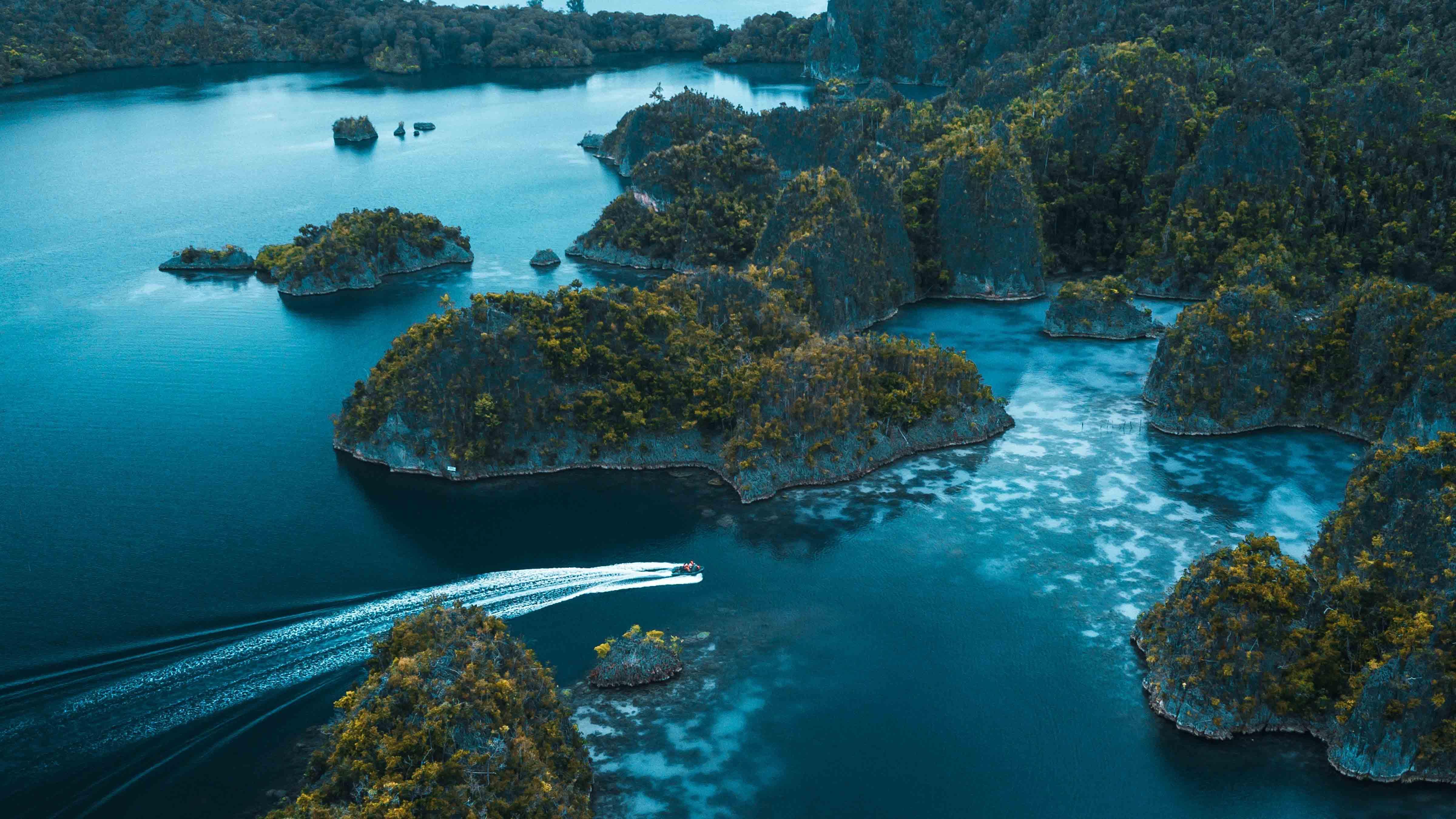




• The Natural Start Alliance: Unites organizations and people working to bring nature and the environment to early childhood education, including schools, environmental education centers, non-profit organizations, zoos and aquariums, park districts, professional associations, and thousands of individual education professionals and parents.
• US Environmental Protection Agency: Aims to reduce negative environmental impacts on children through involvement in EPA rule-making, policy, enforcement actions, research and applications of science that focus on prenatal and childhood vulnerabilities. The EPA also coordinates community-based programs to eliminate threats to children’s health where they live, learn and play.
Our goal is to aggregate compelling research and resources to inform our industry across all verticals. We hope the information spotlighted in this report inspires you not only to create ecoconscious media, but also implement sustainable practices in your work.


Thank you!
For any questions or comments, please contact: insights@childrensmediaassociation.org

This report would not have been possible without the creativity of the talented photographers on PEXELS, UNSPLASH, and ADOBE STOCK.
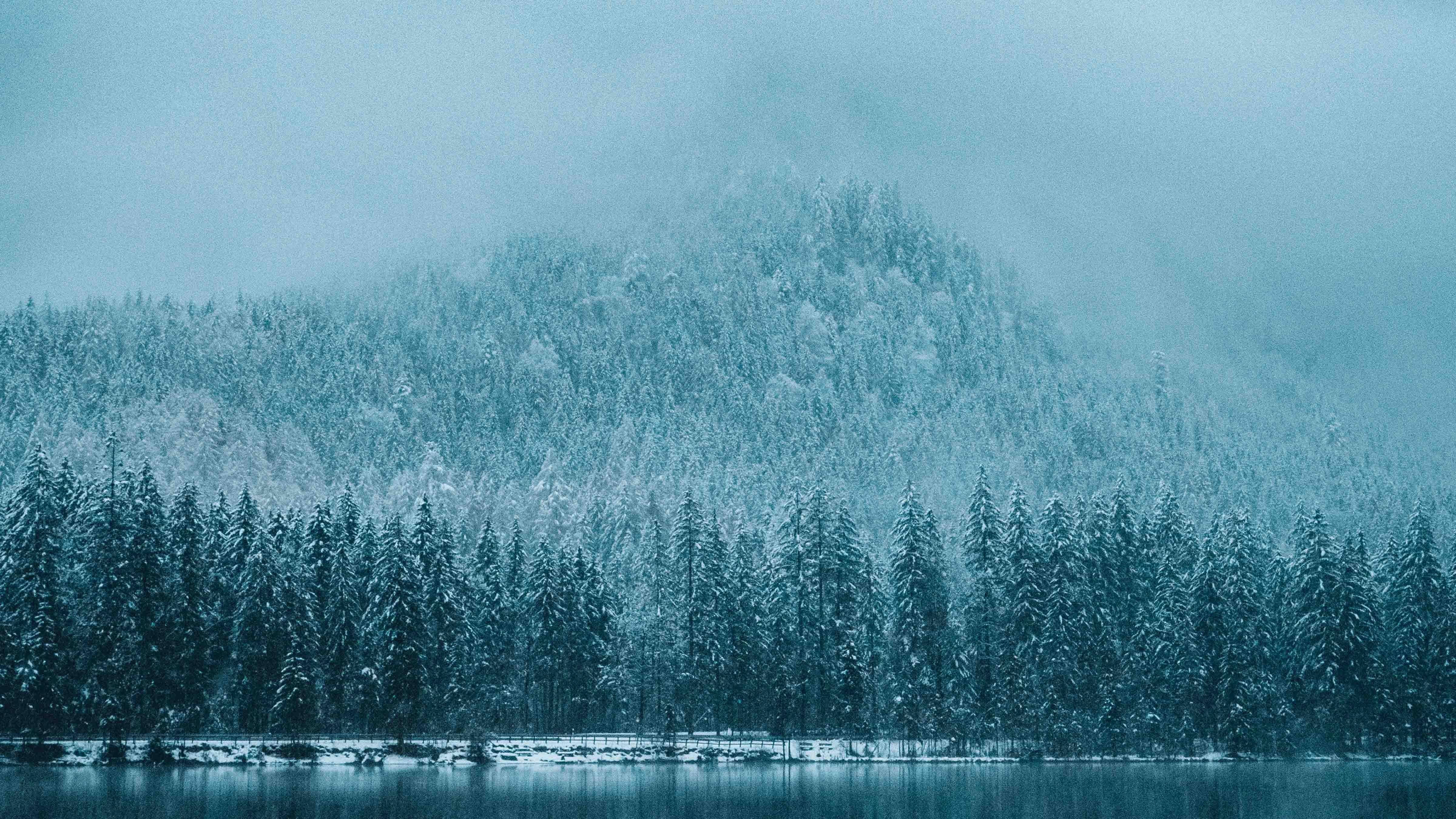

Octonauts | BBC & Netflix
Obki | Sky Kids
MeteoHeres | PBS Kids
Galápagos X | Big Bad Boo
Bottle Cap | Psyop
Our Planet | Netflix

Wild Isles | BBC iPlayer
Getting Warmer with Kal Penn | Bloomberg
1. Climate Change: A Timeline. Climate Wise. https://climate-wise.com/news-and-articles/climate-change-a-timeline/.
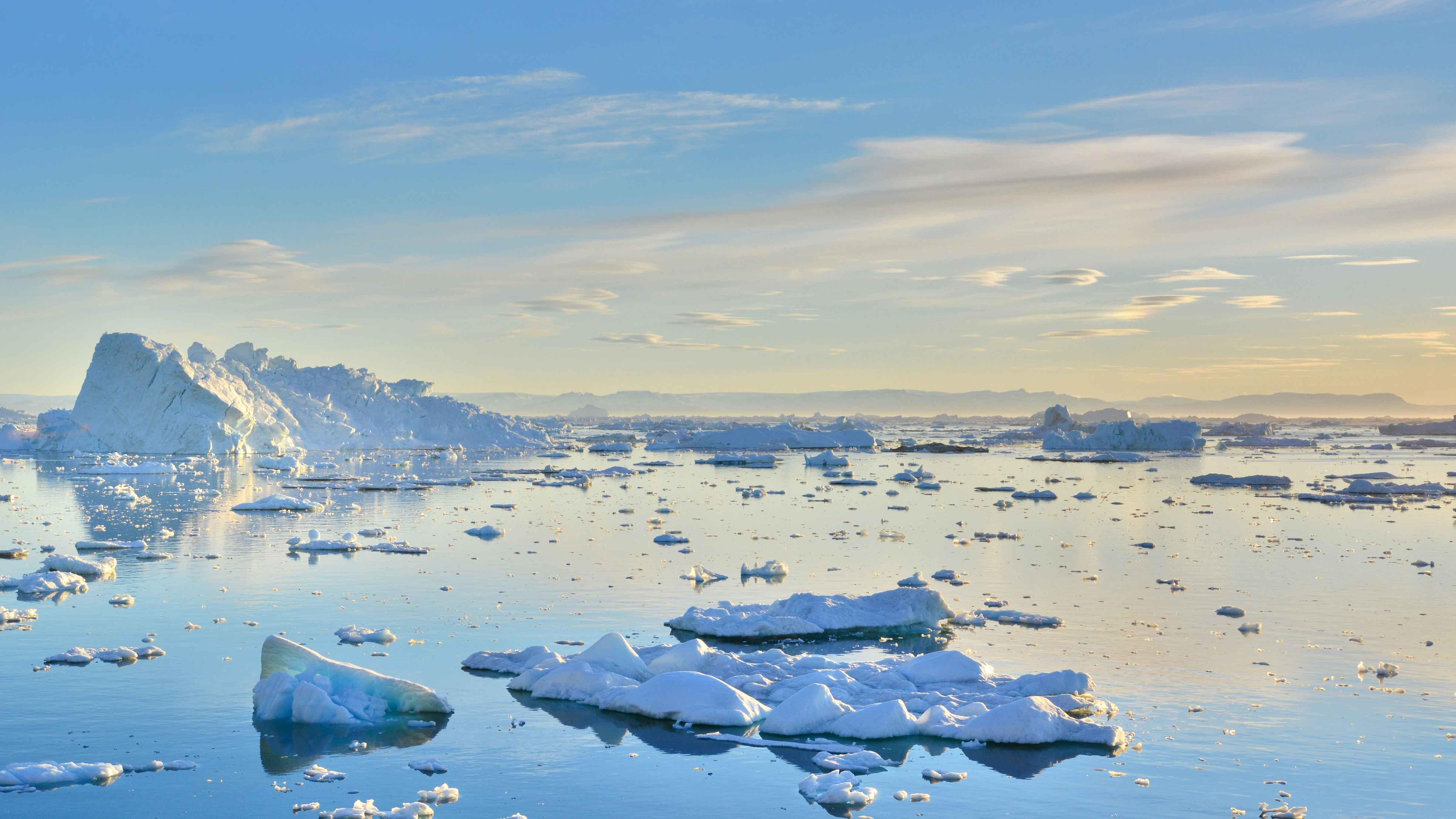
2. IPCC Sixth Assessment Report. The Intergovernmental Panel on Climate Change. https://www.ipcc.ch/report/ar6/wg1/. Published August 2021.
3. The Climate Crisis is a Child Rights Crisis. UNICEF. https://www.unicef.org/reports/climate-crisis-child-rights-crisis. Published August 2021.
4. Plumer, B. and Fountain, H. A Hotter Future Is Certain, Climate Panel Warns. But How Hot Is Up to Us. The New York Times. https:// www.nytimes.com/2021/08/09/climate/climate-change-report-ipcc-un.html. Published August 9, 2021.
5. Vergunst, F. and Berry, H. L. Climate Change and Children’s Mental Health: A Developmental Perspective. Association for Psychological Science. https://journals.sagepub.com/doi/pdf/10.1177/21677026211040787. Published 2022.
6. Whitmore-Williams, S. C. et al. Mental Health and Our Changing Climate: Impacts, Implications, and Guidance. American Psychological Association. https://www.apa.org/news/press/releases/2017/03/mental-health-climate.pdf. Published March 2017.
7. Goodes, T. L. et al. Eco-anxiety in children: A scoping review of the mental health impacts of the awareness of climate change. Frontiers in Psychology. https://www.ncbi.nlm.nih.gov/pmc/articles/PMC9359205/pdf/fpsyg-13-872544.pdf. Published July 25, 2022.
8. Hickman, C. Children and Climate Change: Exploring Children’s Feelings About Climate Change Using Free Association Narrative Interview Methodology. Climate Psychology. https://link.springer.com/chapter/10.1007/978-3-030-11741-2_3. Published June 2, 2019.
9. Ojala, M. Regulating worry, promoting hope: How do children, adolescents, and young adults cope with climate change? International Journal of Environmental & Science Education.https://cssn.org/wp-content/uploads/2020/12/Regulating-worry-promoting-hope-How-dochildren-adolescents-and-young-adults-cope-with-climate-change-Maria-Ojala.pdf. Published October 2012.
10. Foster, E. Climate change is a major worry for EMEA kids. Kidscreen. https://kidscreen.com/2021/07/07/climate-change-is-a-major-worryfor-emea-kids/. Published July 7, 2021.
11. Marks, E. and Hickman, C. et al. Young People's Voices on Climate Anxiety, Government Betrayal and Moral Injury: A Global Phenomenon. University of Bath. https://papers.ssrn.com/sol3/papers.cfm?abstract_id=3918955. Published September 7, 2021.
12. Ojala, M. When Young People Worry About Climate Change. Tufts University. https://sites.tufts.edu/earthstewards/2020/08/11/when-young-people-worryabout-climate-change/. Published August 11, 2020.
13. Giaccardi, S., Rogers, A., and Rosenthal, E.L. A Glaring Absence: The Climate Crisis is Virtually Nonexistent in Scripted Entertainment. Good Energy. https:// www.goodenergystories.com/offerings/research. Published October 2022.
14. Kamenetz, A., Poirier, S., and Schifter, L. Breaking the Silence: Kids’ Media Can Step Up on Climate Change. The Aspen Institute, This Is Planet Ed. https:// www.thisisplaneted.org/img/BreakingTheSilence-KidsMedia-Screen.pdf. Published December 6, 2022.
15. Miller, D. and Corvidae, J. Lights! Cameras! Clean Energy! Rocky Mountain Institute. https://www.greenproductionguide.com/wp-content/uploads/2022/05/ Lights_Camera_Clean_Energy_Web.pdf. Published 2018.
16. About the DGA Sustainable Future Committee. Director’s Guild of America. https://www.dga.org/The-Guild/Committees/Special/Sustainable-FutureCommittee.aspx
17. Our journey to net zero carbon. Sky Zero. https://www.skyzero.sky/our-story.
18. Green Production Guide. https://www.greenproductionguide.com/.
19. Production Handbook. We Are Albert. https://wearealbert.org/production-handbook/.
20. Taber, F. and Taylor, N. Climate of Concern--A Search for Effective Strategies for Teaching Children about Global Warming. International Journal of Environmental and Science Education. https://eric.ed.gov/?id=EJ884387. Published April 2009.
21. Ardoin, N. and Bowers, A. W. Early childhood environmental education: A systematic review of the research literature. Educational Research Review.
22. Courney, N. J. 6 Ways to Explore Nature With Preschoolers. PBS Kids. https://www.pbs.org/parents/thrive/6-ways-to-explore-nature-with-preschoolers
23. Garling, A. and Vincent, J. et al. Planning for Resilient Early Care and Education: Addressing Climate Vulnerabilities. Low Income Investment Fund, UC Berkeley. https://static1.squarespace.com/static/5e221ab388621f5c0aeb37e5/t/63321ee69ac3590590365903/1664229096392/ Planning+for+Resilient+Early+Care+and+Education+9.26.22+Final.pdf. Published September 2022.
24. K12 Climate Action Plan. The Aspen Institute, This is Planet Ed. https://www.thisisplaneted.org/img/K12-ClimateActionPlan-ExecutiveSummary-Screen.pdf. Published 2021.

25. New Jersey Students Enter First School Year With K-12 Climate Change Education. State of New Jersey. https://www.nj.gov/governor/news/news/ 562022/20220906a.shtml. Published September 6, 2022.
26. Protecting Children's Environmental Health: A Comprehensive Framework. American Public Health Association. https://www.apha.org/policiesand-advocacy/public-health-policy-statements/policy-database/2018/01/23/protecting-childrens-environmental-health. Published November 7, 2017.
27. Kristoffersesn, M. Collective action helps young adults deal with climate change anxiety. Yale University. https://ysph.yale.edu/news-article/ collective-action-helps-young-adults-deal-with-climate-change-anxiety/. Published March 2, 2022.

28. Reidy, K. Bangladeshi children raise their voices and call for climate action on World Children’s Day. UNICEF. https://www.unicef.org/bangladesh/ en/stories/bangladeshi-children-raise-their-voices-and-call-climate-action-world-childrens-day. Published November 19, 2020.
29. Juliana v. United States. Our Children’s Trust. https://www.ourchildrenstrust.org/juliana-v-us
30. Support the Campaign for H.Res.259. Schools for Climate Action. https://schoolsforclimateaction.weebly.com/support-hres-975-support-youthmental-health-amid-the-climate-crisis.html
31. Anderson, J. Harvard EdCast: Empowering Schools to Take Climate Action. Harvard University. https://www.gse.harvard.edu/news/22/11/harvardedcast-empowering-schools-take-climate-action. Published November 15, 2022.
32. Sommer, L. Coping with climate change: Advice for kids — from kids. NPR. https://www.npr.org/2022/11/17/1137156134/kids-youth-coping-climatechange. Published January 17, 2023.
33. UN Environment Programme. Historic day in the campaign to beat plastic pollution: Nations commit to develop a legally binding agreement. https:// www.unep.org/news-and-stories/press-release/historic-day-campaign-beat-plastic-pollution-nations-commit-develop. Published March 2, 2022.
34. K12 Education and Climate Provisions in The Inflation Reduction Act. The Aspen Institute, This Is Planet Ed. https://www.thisisplaneted.org/blog/ school-climate-provisions-in-the-inflation-reduction-act
35. About ClimeTime. ClimeTime. https://www.climetime.org/about/.
36. Child Care and Development Infrastructure Grant Program. California Department of Social Services. https://www.cdss.ca.gov/inforesources/childcare-and-development/infrastructure-grant-program.
37. Producers Guild of America Call To Action. 10/2021. https://www.greenproductionguide.com/wp-content/uploads/2021/10/PGA-Call-to-Action.pdf.